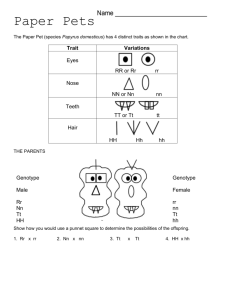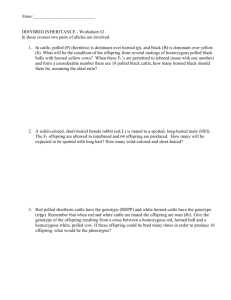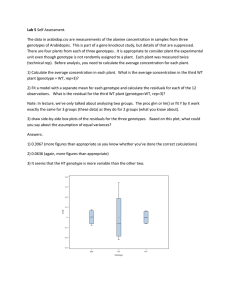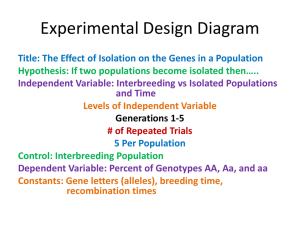B-14 Chance Independent Assortment and Results
advertisement
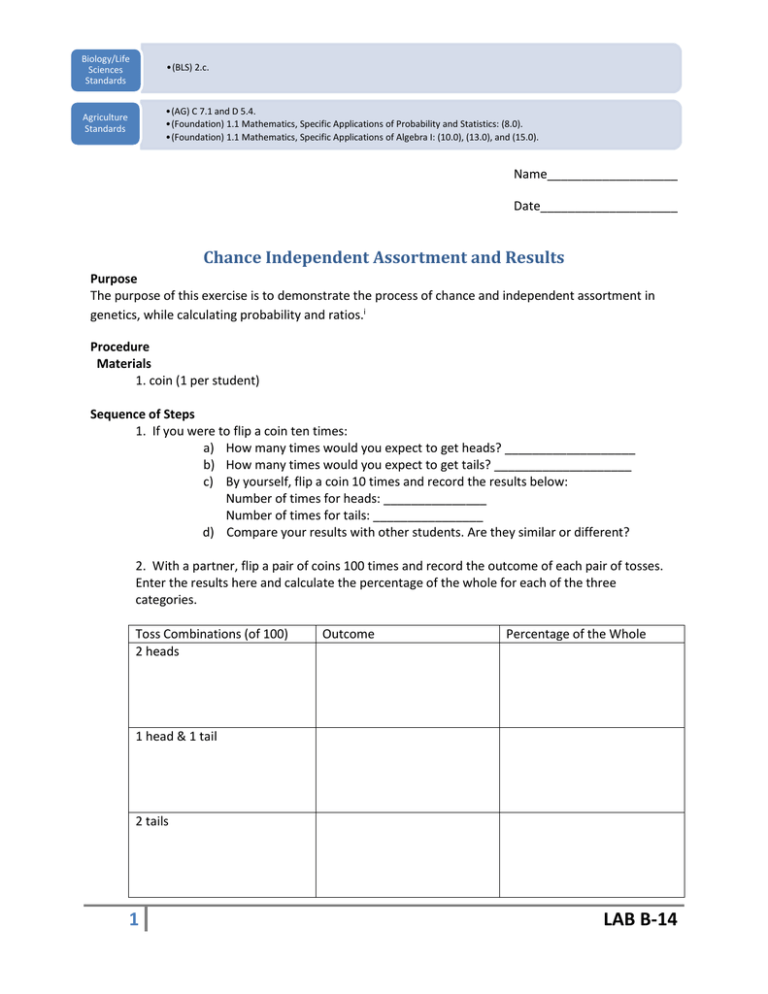
Biology/Life Sciences Standards •(BLS) 2.c. Agriculture Standards •(AG) C 7.1 and D 5.4. •(Foundation) 1.1 Mathematics, Specific Applications of Probability and Statistics: (8.0). •(Foundation) 1.1 Mathematics, Specific Applications of Algebra I: (10.0), (13.0), and (15.0). Name___________________ Date____________________ Chance Independent Assortment and Results Purpose The purpose of this exercise is to demonstrate the process of chance and independent assortment in genetics, while calculating probability and ratios.i Procedure Materials 1. coin (1 per student) Sequence of Steps 1. If you were to flip a coin ten times: a) How many times would you expect to get heads? ___________________ b) How many times would you expect to get tails? ____________________ c) By yourself, flip a coin 10 times and record the results below: Number of times for heads: _______________ Number of times for tails: ________________ d) Compare your results with other students. Are they similar or different? 2. With a partner, flip a pair of coins 100 times and record the outcome of each pair of tosses. Enter the results here and calculate the percentage of the whole for each of the three categories. Toss Combinations (of 100) 2 heads Outcome Percentage of the Whole 1 head & 1 tail 2 tails 1 LAB B-14 3. Describe how dominant and recessive genes function. 4. Assume you have a cow that is black with genotype BB. She is mated to a white male, genotype bb). Black color is Dominant over white color. a. What is the genotype of the male? _____________________ b. What is the genotype of the offspring?__________________ c. What are the possible phenotypes of the offspring?_________________ d. What would you expect the ratio of different genotypes to be? _______________ e. What would you expect the ratio of the different phenotypes to be? ____________ 5. Assume you have a horned Hereford bull, with genotype pp. He is mated to a polled Hereford female that is polled (no horns), with genotype Pp. Polled is dominant and horned is recessive. a. What is the genotype of the male? _____________________ b. What is the genotype of the offspring?__________________ c. What are the possible phenotypes of the offspring? _________________ d. What would you expect the ratio of different genotypes to be? _______________ e. What would you expect the ratio of the different phenotypes to be? ____________ i Goehring, JessaLee (2008).Chance, Independent Assortment, and Predictable Results. Lodi High School Agriculture Department. 2 LAB B-14

